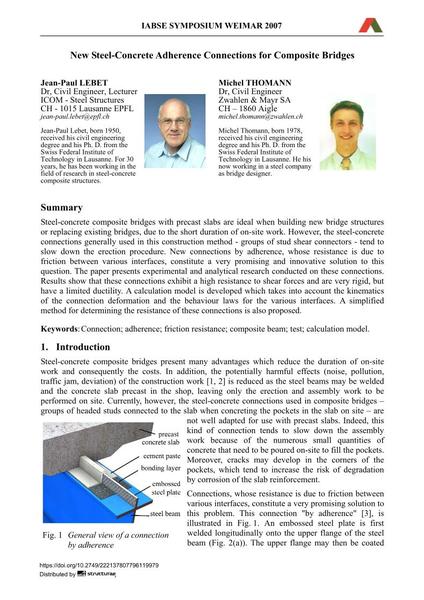New Steel-Concrete Adherence Connections for Composite Bridges

|
|
|||||||||||
Bibliografische Angaben
| Autor(en): |
Jean-Paul Lebet
M. Thomann |
||||
|---|---|---|---|---|---|
| Medium: | Tagungsbeitrag | ||||
| Sprache(n): | Englisch | ||||
| Tagung: | IABSE Symposium: Improving Infrastructure Worldwide, Weimar, Germany, 19-21 September 2007 | ||||
| Veröffentlicht in: | IABSE Symposium Weimar 2007 | ||||
|
|||||
| Seite(n): | 142-145 | ||||
| Anzahl der Seiten (im PDF): | 8 | ||||
| Jahr: | 2007 | ||||
| DOI: | 10.2749/222137807796119979 | ||||
| Abstrakt: |
Steel-concrete composite bridges with precast slabs are ideal when building new bridge structures or replacing existing bridges, due to the short duration of on-site work. However, the steel-concrete connections generally used in this construction method - groups of stud shear connectors - tend to slow down the erection procedure. New connections by adherence, whose resistance is due to friction between various interfaces, constitute a very promising and innovative solution to this question. The paper presents experimental and analytical research conducted on these connections. Results show that these connections exhibit a high resistance to shear forces and are very rigid, but have a limited ductility. A calculation model is developed which takes into account the kinematics of the connection deformation and the behaviour laws for the various interfaces. A simplified method for determining the resistance of these connections is also proposed. |
||||
| Stichwörter: |
Versuch Test Verbundträger Anschluß Berechnungsmodell
|
||||
